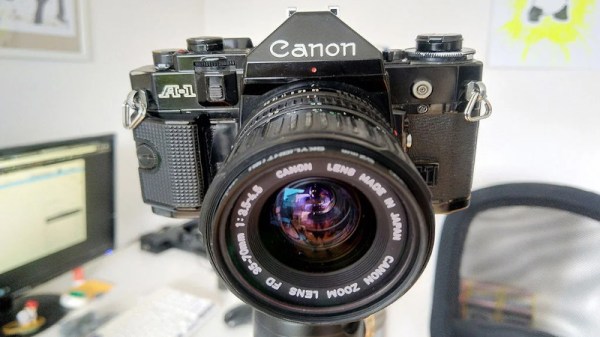The unarguable benefits of digital photography has rendered the analog SLR obsolete for most purposes. This means that a wide selection of cameras and lenses are available on the second hand market for pennies on the dollar, making them ripe targets for hacking. [drtonis] decided to experiment with a quick and easy digital conversion to an old Canon A-1, and it’s got us excited about the possibilities.

It’s a simple hack, but a fun one. The SLR is opened up, and the spring plate for holding the film is removed. A Raspberry Pi camera then has its original lens removed, and is placed inside the film compartment. It’s held in with electrical tape, upon a 3mm shim to space it correctly to work with the original optics.
[drtonis] notes that the build isn’t perfect, with some aberration likely caused by the reflective electrical tape in the film cavity. However, we think it’s a nice proof of concept that could go so much further. A Raspberry Pi Zero could be easily squeezed inside along with the camera, and everything glued in place to make things more robust. A specialist paint such as Stuart Semple’s Black 2.0 could also help cut down on light leaks inside. Plus, there’s plenty of small screens that can be used with the Raspberry Pi that would provide a useful preview function.
We’d love to see more conversions like this one. While it’s unlikely they’ll compete with commercial DSLRs on outright performance, everyone loves a little bit of charming distortion here and there, and all manner of fancy lenses can be had for cheap for analog platforms. We’ll be keeping a close eye on the tipline for further This fundevelopments – you know what to do!
Continue reading “Quick And Dirty Digital Conversion For Analog SLR”






















